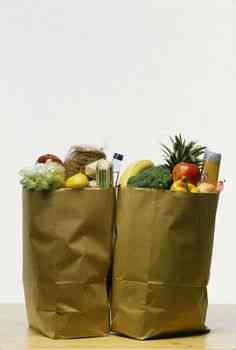|
Unlike Whole Foods which allows their purchasers at each store to hand select local products to feature, Trader Joes doesn’t purchase locally at all. Trader Joes is only able to offer such low pricing because the cut out the middleman and all branding cost that are associated with launching a product. Sprouts is cheap because they cut cost in their branding and do not focus on the customer experience like Whole Foods does. They also don’t do half the consumer education that Whole Foods does or spend near as much money to train and pay their employees. I was upset when Whole Foods bought Wild Oats, and I love TJ’s and Sprouts but Whole Foods is not their nemesis. It was one of the first stores to bring organic and natural foods to people across the country and stores like Sprouts would not have gained the popularity they did without Whole Foods drawing so much attention to organic and natural foods. Because of their mission to support smaller companies through regional purchasing (which hardly any other grocery stores do), Whole Foods has made it possible for many organic and natural products to survive and thrive and be enjoyed by us all. WF’s will likely help our friends at Laughing Giraffe grow, and as more organic companies flourish that means more land will be converted to organic agriculture and less toxic pesticides will enter our land, water supplies–and ultimately our bodies. Just a little food for thought.
The Whole Story About Whole Foods Market
|
|
It is growing harder to make the case that shopping at Whole Foods is socially commendable. Whole Foods has faced well-deserved criticism for its effects on the environment, and its employees. Whole Foods is an “industrial organic” company that has done away with the local distribution that was the center of the 1960’s back-to-nature movement. There is nothing environmentally friendly about Whole Food’s practice of importing asparagus in from Argentina in January. Whole Foods is also the second largest union-free food retailer, right behind Wal-Mart. Whole Foods has taken the position that unions are not valid. Many of Whole Foods’ canned or boxed items contain MSG, even though it is on Whole Foods list of unacceptable food ingredients. Their dairy products may or may not contain rBGH. Whole Foods is a Fortune 500 Company that owes its allegiance to its shareholders. It is exploiting a niche market, and has now cleared the field of major competitors, leaving it free to raise prices and reduce quality. Sources:
|
||||







 Many organic food fans trust stores that sell largely organic produce. However, the merger of Whole Foods and Wild Oats may be a sign that it’s time for the rose-colored glasses to come off.
Many organic food fans trust stores that sell largely organic produce. However, the merger of Whole Foods and Wild Oats may be a sign that it’s time for the rose-colored glasses to come off.


